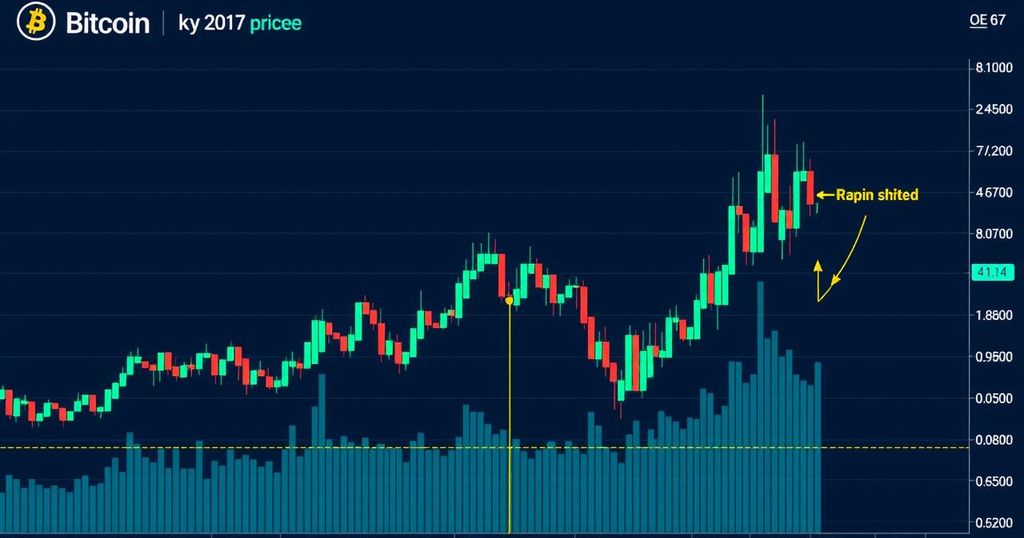Tracking Bitcoin Volatility: Strategies to Maximise Your BTC Investment
Bitcoin volatility, currently above $83,000, significantly impacts investment decisions. Factors affecting volatility include market sentiment, macro-economic trends, and large transactions. To track this volatility, tools such as volatility indexes, candlestick charts, on-chain metrics, real-time news alerts, and volatility screener tools are employed. Strategies for optimising investment include dollar-cost averaging, buying dips, setting take-profit zones, and using stablecoins. Bitcoin’s volatility is projected to continue into 2025 amidst various economic events.
Bitcoin is currently trading above $83,000, prompting investors to diligently observe market fluctuations. A deeper understanding of Bitcoin volatility is essential for both new and veteran investors alike, as it can significantly influence buying and selling strategies, ultimately impacting returns on investments.
Volatility refers to the extent of price variation in Bitcoin, influenced by several factors including market sentiment, macro-economic trends (like inflation and interest rates), large transactions from “whales”, ETF flows, and significant news events such as regulatory changes or geopolitical issues.
To effectively monitor Bitcoin volatility, several tools can be employed:
1. Volatility Indexes: Bitcoin Volatility Index (BVOL) from platforms like BitMEX or BuyBitcoinWorldwide measures price changes over 30 to 60 days.
2. Candlestick Charts: Tools such as TradingView, CoinMarketCap, and Binance offer insights into intraday volatility through wicks, support/resistance levels, and moving averages to predict trends.
3. On-Chain Metrics: Platforms like Glassnode and CryptoQuant are useful for tracking whale wallet activities, exchange inflows and outflows, and MVRV (Market Value to Realized Value) ratios.
4. Real-Time News Alerts: Setting Google Alerts for phrases like “Bitcoin ETF flows”, “Crypto regulation”, and “BTC price today” ensures that investors stay updated on relevant developments.
5. Volatility Screener Tools: Services such as Messari.io, LunarCrush, and CoinGecko provide sentiment analysis, volatility filters, and social engagement metrics to help in decision-making.
To maximise investments in relation to Bitcoin’s volatility, consider these strategies:
– Dollar-Cost Averaging (DCA): Invest fixed amounts at regular intervals to mitigate the risks associated with volatility.
– Buy the Dip: Keep an eye on support zones and execute limit orders when Bitcoin experiences sharp retracements.
– Set Take-Profit Zones: Secure profits at critical resistance levels, particularly when Bitcoin is overbought.
– Use Stablecoins for Timing: Transition to stablecoins like USDT or USDC during periods of high uncertainty and re-enter the market when prices decline.
Looking ahead, Bitcoin is expected to sustain its volatility into 2025, driven by U.S. elections, interest rate adjustments, and ongoing geopolitical dynamics. Rather than shying away from volatility, informed investors will track and leverage it to optimise their financial strategies.




Post Comment